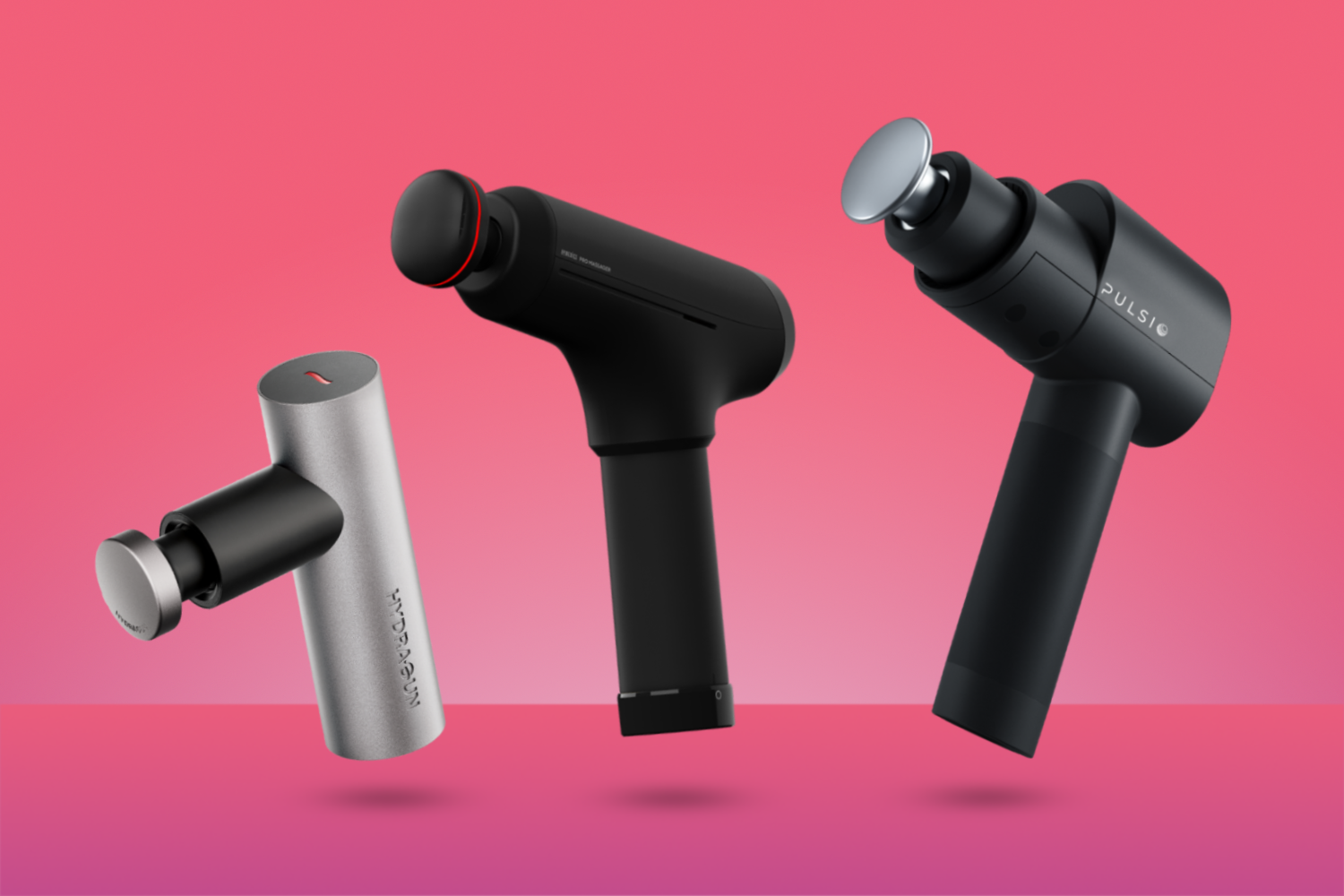I’m the first to admit that search engines are getting a little wonky these days (looking at you, Google AI Overviews). But they’re still the leading source of traffic (around 53%) to websites. And that means SEO copywriting is still a critical skill to have in 2025.
Of course, AI and zero-click searches have changed the rules of writing for search engine exposure significantly. So while many of the SEO fundamentals still apply, you’ll need a new playbook to get found on search (and AI) results pages.
In this guide, you’ll learn how to find the exact words your audiences search for and write content that both Google and readers love. Plus, you’ll get a bunch of copywriting tips that’ll ramp up your rankings on all search platforms.
Contents
What is SEO copywriting?
SEO copywriting is the practice of writing content designed to rank well on search engines while providing value and clarity to readers.
SEO copywriting is basically the creation of SEO content—but while content can refer to an infographic that you place into a blog post or a video you create and optimize for YouTube SEO, copywriting refers to the actual words in the written parts of your content.
Many of the tactics I give in this guide are about structuring content in a way that helps algorithms crawl and index it. But Google has gotten pretty clever at sniffing out copy that’s not great for people. So SEO copywriting also means creating content that’s helpful and interesting to your audience.
If you want to see a classic example of SEO copywriting, look at a top-ranking recipe post.
They’ve got keywords everywhere they need to be (maybe more than needed, sometimes). Their content is structured so it’s skimmable, crawlable, and easy to follow. And they confirm their expertise (“I’ve been baking versions of this cake for 30 years”), so algorithms and followers trust what they say.
These content creators have perfected the recipe for SEO copywriting.
SEO vs. GEO copywriting
I want to quickly define a related tactic called generative engine optimization (GEO), AKA AI engine optimization (AIO). GEO refers to optimizing content so it gets cited by AI search engines, like Perplexity and Google’s AI-powered features.
I’m focusing on what it takes to rank on search engine results pages in this guide. But if you haven’t dug into GEO yet, this guide to getting traffic from AI search engines is a great place to start.
👋 Want more up-to-date SEO tips? Download How to Do SEO Right—Right Now!
The complete guide to SEO copywriting for higher rankings (+examples)
The goal of SEO copywriting is to get found in search engine results and get people to click on your content. These steps and tips help make both happen more often.
1. Conduct keyword research
Keyword research is the task of finding the terms people use to look for things on search engines. Even though Google and its competitors are smart enough now to understand the meaning of web pages without exact keyword matches, it’s still a good practice to start with the best terms in mind.
Here’s a simplified version of how I find keywords using an SEO tool:
- Start with a general topic: I think of a question my target audience has, like “how do I file state taxes,” or “what’s the best way to paint an exterior door.”
- Find ranking posts: Next, I type in whatever idea I have into Google and see which posts are on the search engine results page (SERP) already.
- Use a tool to find the right keyword: Finally, I paste the URL of a ranking post into a keyword tool like Ahrefs to see which exact key phrases it’s ranking for.
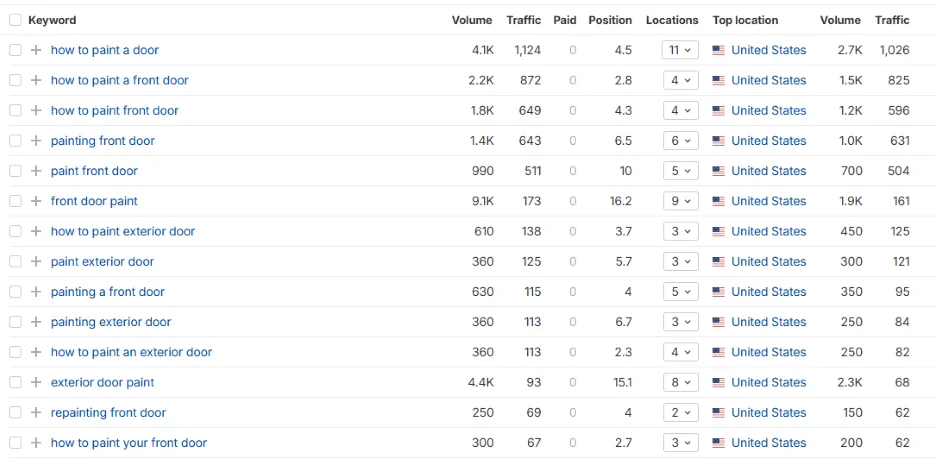
I can then pick one of those or dig deeper into things like how difficult it will be to rank for that keyword and how many people search for it every month.
If you don’t have a paid subscription to something like Ahrefs, WordStream’s Free Keyword Tool will come in very handy.
That’s a simplified version of my process–and it’s just one option you can try. Use this guide to keyword research for a more in-depth explanation.
Keyword tip: Stick with keywords and topics that are relevant to your website. Google will happily suppress an accountant’s website that’s posting about popular video games just to get clicks.
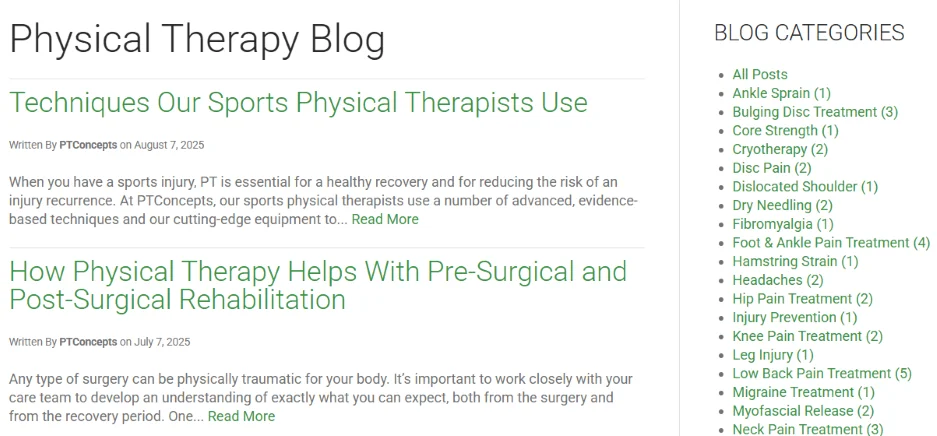
Keep your keyword topics relevant to your overall website to avoid Google penalties.
2. Understand and match keyword intent
Keyword intent refers to the reason people search for the keyword you’re thinking about targeting. Generally speaking, there are four broad types of keyword intent:
- Informational: A user wants to learn more about something, like a topic, product, or industry. Example: “history of Valentine’s Day”
- Navigational: A user wants to visit a specific website or web page. Example: “1800 flowers”
- Commercial: A user is researching products or services and has the intent to make a purchase in the near future. Example: “Best flowers for a friend on Valentine’s Day”
- Transactional: A user is ready to make a purchase. Example: “buy a bouquet of flowers”
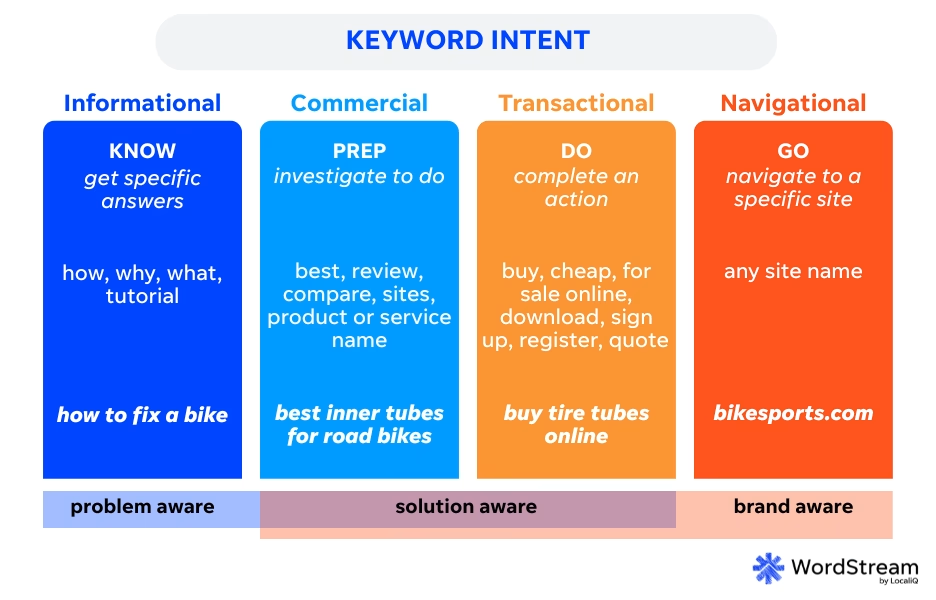
Since it’s in Google’s best interest to deliver its users top-notch search results, it rewards marketers who closely match keyword intent.
If you tried to target the keyword “history of Valentine’s Day” with the pricing page for your flower delivery service, you wouldn’t perform very well in the organic search results. Why? Because you’d fail to match keyword intent.
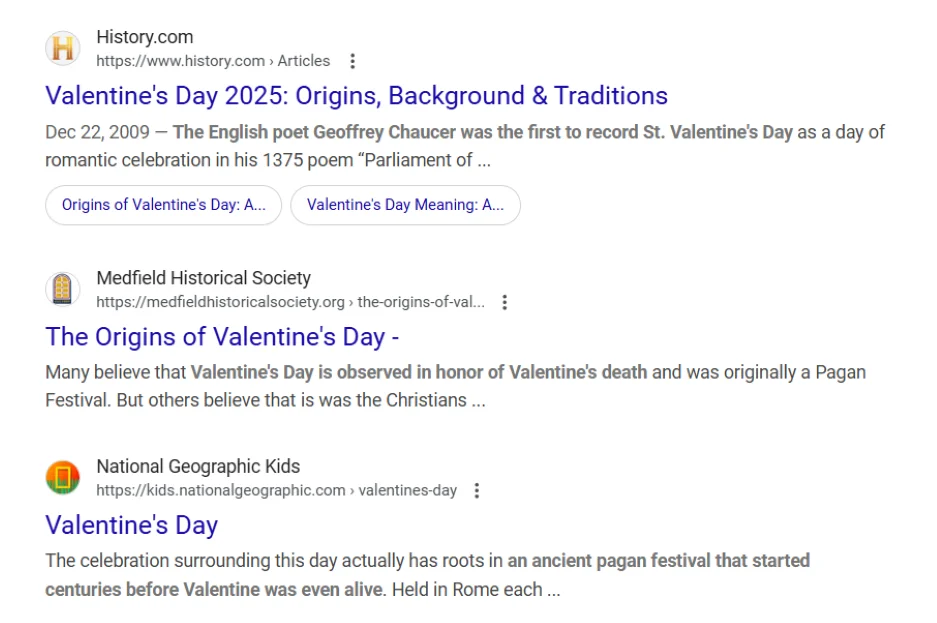
The intent of the keyphrase “history of Valentine’s Day” is informational, so you won’t see many commercial pages in the organic results.
Keyword intent tip: Align your calls to action with keyword intent, too. If it’s an informational keyword, use CTAs like “Subscribe for the latest news” or “Download this guide.” For transactional intent keywords, try “Buy now” or “Get a free quote.”
3. Target ancillary keywords
A single piece of content can rank for several keywords. Ideally, much of your content will rank for several keywords.
Once you’ve picked a primary keyword, look for complementary terms that keep within the overall theme of the topic but don’t overlap 100%.
Say you want to target the term “back pain.” There are a bunch of ancillary keywords you could also target in the same content, like “what causes back pain” and “how to relieve lower back pain.”
You can use your keyword tool to find ancillary keywords. Or you can look at two features of the Google search page: People also ask and People also search for.
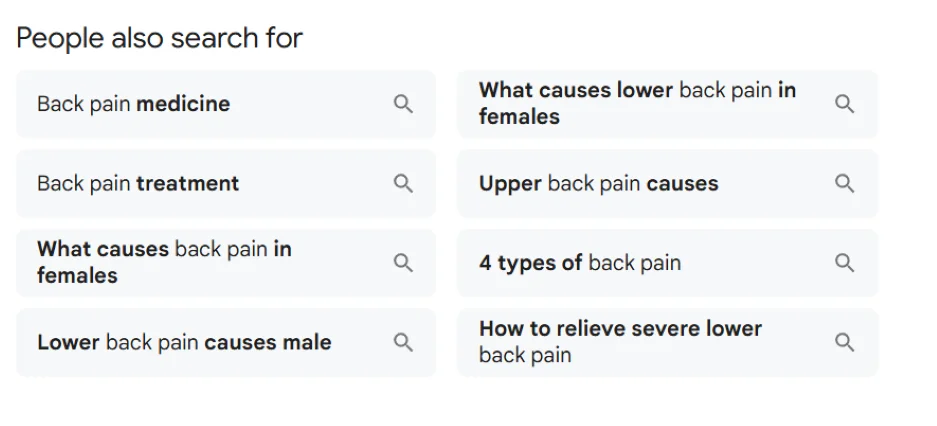
Those two features tell you what people search for next after reviewing the main keyword’s results. So they’re the perfect additions to make your content comprehensive and rank for more keywords with one asset.
Ancillary keyword tip: Google’s search bar autofill is another way to quickly find ancillary keywords. Just start typing your primary keyword in the search bar and see what it autofills. Oh, and try doing this in “private” or “incognito mode” so your search history doesn’t affect the results.
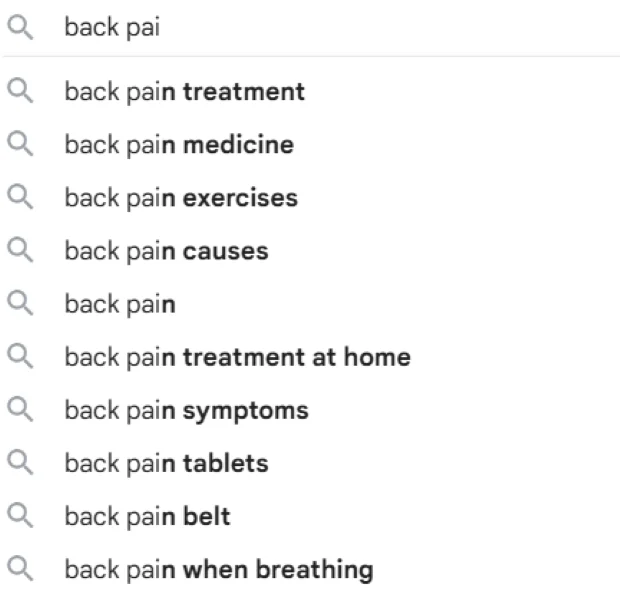
4. Place keywords strategically and naturally
Using keywords strategically means using them where they can have the most influence on search engines without negatively affecting the experience for readers.
Where should you use keywords? Wherever they can act as a signal that a webpage has the information a searcher is looking for. Here are the most common keyword placements:
- The page title
- In your URL
- Meta title tag
- Meta description
- In the introduction
- In subtitles like H2s and H3s
- Organically in the body copy
This post ranked for the search term “how to choose a daycare.”

It has the exact keyphrase match in the title, and a couple of variations in the introduction. The keyphrase is also in the page’s URL and title tag.
It’s easy to go overboard here, but whatever you do, do NOT try to stuff your page full of keywords. That tactic worked for about 10 minutes at the dawn of SEO. Not only will it not help you rank, it’ll provide a terrible experience for your visitor, which, in turn, will hurt your chances of ranking.
Instead, use related terms and synonyms—like “daycare choices,” “options for daycare,” and “where to look for daycares online.” The goal is to balance SEO goals with a positive reader experience.
Keyword placement tip: Only use keywords in the body of your text organically. That means placing them if they flow with the rest of your writing and feel conversational, rather than repetitive or forced.
🚨 Let’s keep this traffic train rolling! Get your free copy of 25 Ways to Increase Traffic to Your Website
5. Create a clear structure
A well-structured, easy-to-read page keeps readers rolling through longer pieces of content and helps search engines understand what it’s all about.
Structuring content for SEO means:
- Adding internal links to other relevant pages of your site.
- Organizing content into smaller sections and labeling them with clear headlines and subheadlines.
- Using bullet points to share information faster.
- Placing images to break up walls of text.
Check out this section of a long blog post about updating your house to increase its value.

Bold type, subheadings by improvement type, internal links, attractive images…this post has it all! There’s a ton of information here, but it doesn’t ever feel exhausting to read.
Also, notice how concise the paragraphs are.

Remember, many people will read your content on a mobile phone. If they see a screen full of text for days, they’re going to hit the back button (which tells Google your content doesn’t deserve to rank).
SEO structure tip: Look for ways to display chunks of information in more digestible ways. Charts, graphs, infographics, and tables are great options.
6. Get to the point
I’ll admit that I’ve been known to write a lengthy introduction every now and then. As valuable as that may be for those writing term papers or Dickensian novels, when we’re talking about SEO copywriting, we have to keep in mind the ultimate goal: to create relevant content. Relevant content, after all, is the stuff Google puts at the top of the organic results.
Though creating relevant content is largely about matching keyword intent, that’s not the only consideration; it’s also important to prove to Google that your content is pertinent. As I’ve learned first-hand, an effective way to prove the pertinence of your content is to target your main keyword early on in your copy.
To see what I mean, take a look at the first two paragraphs of this HubSpot article about writing email subject lines:

By 50 words in, the writer’s already targeted her main keyword three times. Is that the sole reason this post tops the organic results? No, but it’s certainly one of them. Take a page out of the HubSpot playbook and increase keyword density at the beginning of your next blog post.
7. Optimize for Google’s E-E-A-T
Google’s E-E-A-T is a set of criteria Google uses to assess the quality of webpages and content. Although Google says they don’t use them as a ranking factor, following the guidelines of E-E-A-T can prove to search engines (AI and traditional) that your website deserves exposure.
Here’s what E-E-A-T stands for and how you can show it in your content:
- Experience: Share personal experiences, first-hand knowledge, and your results.
- Expertise: Stay within the topical realm of your website, include credentials in author bios, and cite only credible sources.
- Authoritativeness: Get backlinks from credible websites and encourage mentions of your brand.
- Trustworthiness: Verify the information you share, nurture a solid online reputation, and be transparent.
The key to all of this is remembering that trust isn’t just one of the criteria; it’s at the center of them all.
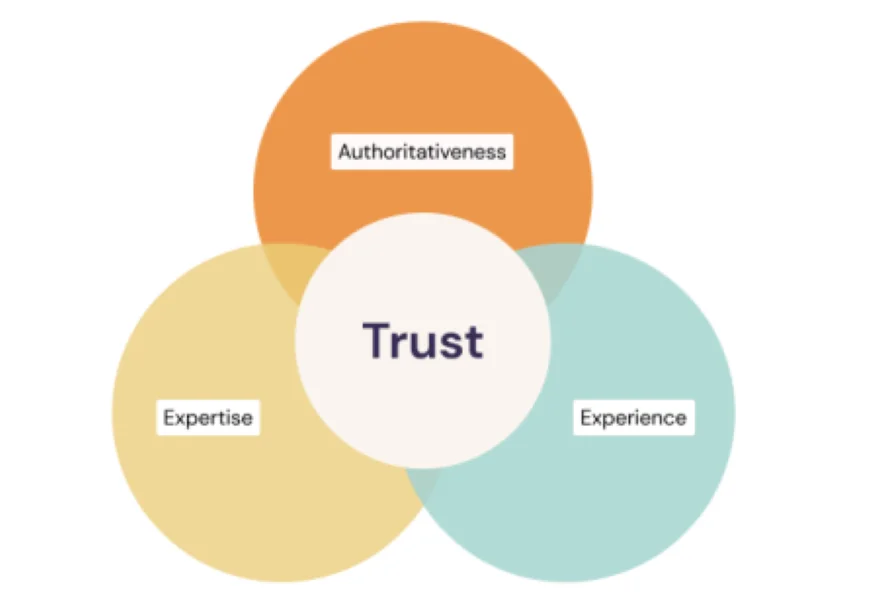
As a bonus, AI search results ground some of their responses in the E-E-A-T principles. As you work to make your content more trustworthy to Google, you could land on more AI search results pages.
E-E-A-T tip: Original data has always been a great addition to content. But now, with some brands leaning hard on AI-generated copy, those survey results or unique research studies will help you stand out even more.
8. Cover the topic in depth
Many informational topics require a comprehensive answer covering several subtopics. Opening a business, for example, is a scary thing to do and has many facets to it.
The table of contents in a post from NerdWallet shows how exhaustive they’ve covered the topic.
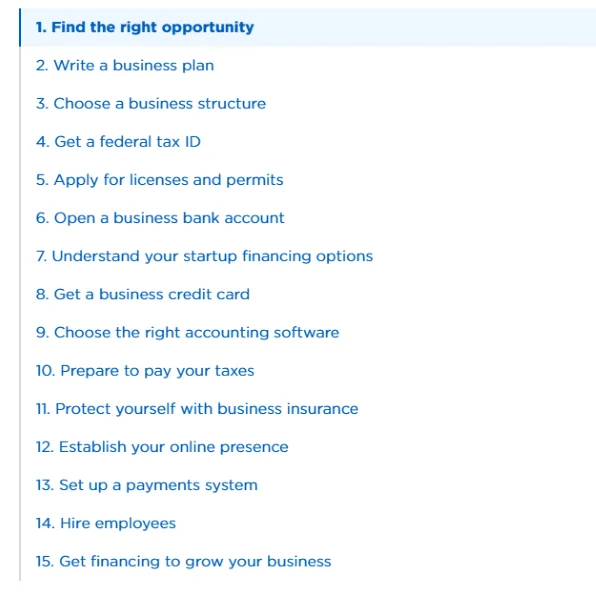
This is the kind of energy you’ll need to bring to big topics like this to rank.
And you can add even more value to your post by including internal links to more resources. That’ll also help Google know that your website is an authoritative resource on the topic.
Look at all the organized internal links just in the first section of that NerdWallet post.
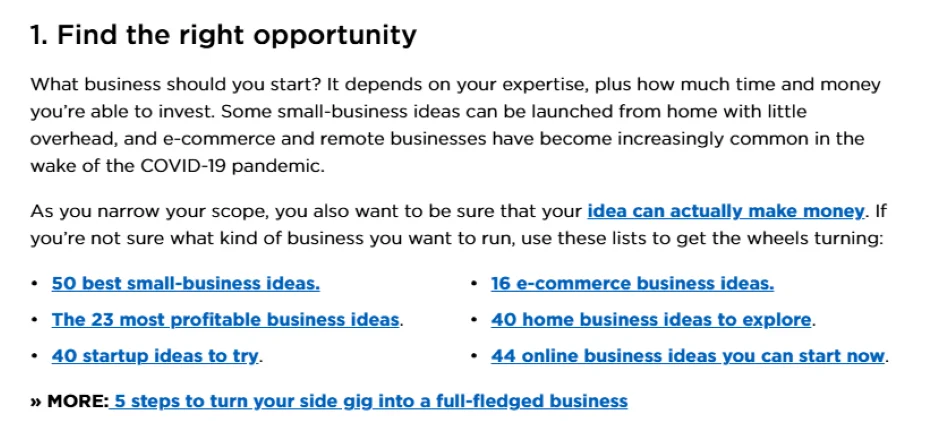
9. Think hard about your headline
It’s not uncommon to spend hours writing a beautifully optimized 2,500-word blog post, only to dedicate 45 seconds to writing a mediocre headline (I’ve done it!). That’s like spending years on the interior design of a beautiful home and then throwing on a second-hand, unpainted door nobody wants to walk through.
You’ll make your content way more competitive in the SERPs if you set aside a substantial amount of time for brainstorming headlines. It may feel like you’re overindexing on a few words. But trust me, when your organic CTR skyrockets and your pageviews go through the roof, you’ll be happy you did it.
There are entire books dedicated to writing great headlines. These headline ideas will get you started:
- Create a sense of urgency
- Ask questions
- Keep it concise
- Feature your keywords
- Establish your authority
Here’s a headline example that uses a question to create a curiosity gap that readers will want to fill (by clicking your link!).

Headline tip: Keep your titles to around 50 to 60 characters max to increase your chances Google won’t shorten (or change it) in the SERP.
10. Get more clicks with optimized meta descriptions
I mentioned using keywords in meta tags. That’s part of optimizing these key SEO components.
Quick catch-up if you’re newer to SEO: Meta descriptions are a brief description of your website for search engines.

As you’re meta descriptions, remember that it’s prime real estate to teach a search engine about your site and convince people to click your link.
Here are some things to think about to optimize your meta description for SEO:
- Lead with search intent.
- Include details and results.
- Add a clear call to action.

The title tag and meta description in this search result are well-optimized for the search term “best dentist for kids in Chicago.”
Meta tag optimization tip: Use numbers and power words in your meta copy. For example, say “save up to 70% off” instead of “get big discounts.”
11. Shoot for zero-click searches (where applicable)
Nearly 60% of Google searches resulted in a click in 2024. Meaning that now, most of the time, users leave the SERP without clicking a single hyperlink.
Before AI took over results pages, featured snippets were the main culprit for the zero-click trend. Featured snippets still exist. But now, AI Overviews are delivering complete answers right in the SERP. So searchers don’t have to click a link to learn how to winterize their homes.
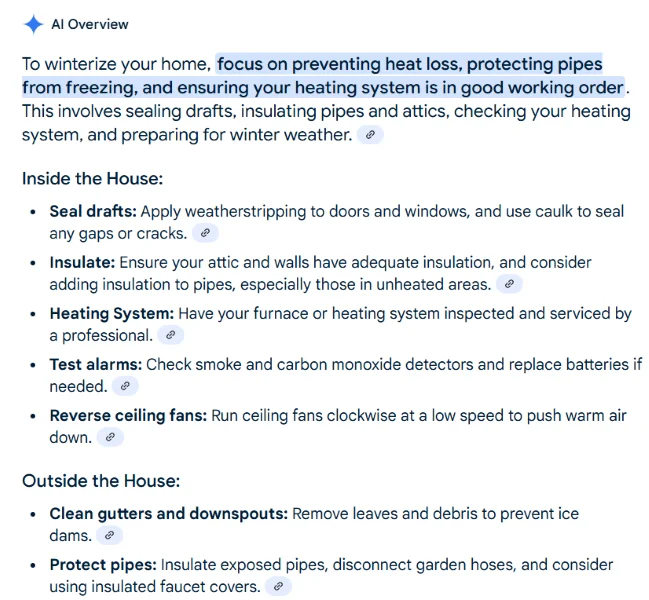
The good news is that Google also offers links, citations, images, and videos from the content it uses to create its AI Overviews. That means there’s at least a chance of some brand exposure, and maybe a click, in these AI answers. Here’s what that looks like for our home winterization result.
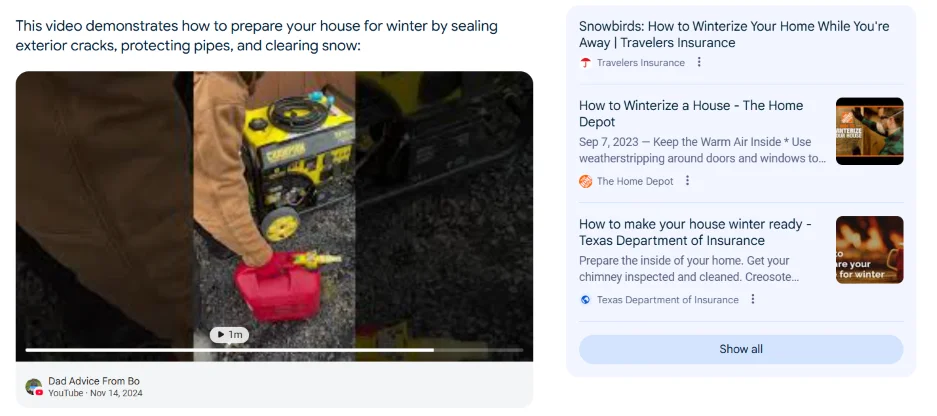
The even better news is that you can shoot to show up in both a featured snippet and an AI Overview. They both tend to answer direct, informational queries. Make sure you answer the fundamental SEO questions in your content with concise answers in a few sentences or less. In our example, that means including a sentence that goes something like “To winterize your home, do [this], [this], and [this].”
There’s more to this story, and we tell it all in the guide to GEO I mentioned earlier.
12. Add FAQs
An FAQ section in a blog post or sales page is a fantastic way to provide those concise answers that featured snippets and AI Overviews love to cite. They also let you quickly target secondary keywords.
This is an especially useful tactic for your most important keywords. Sprinklr offers a social listening tool. So it’d be big for them to rank for the keyphrase “best social listening tools.” They published a blog post on the topic, and then added an expandable FAQ section that covered the main and secondary keywords.
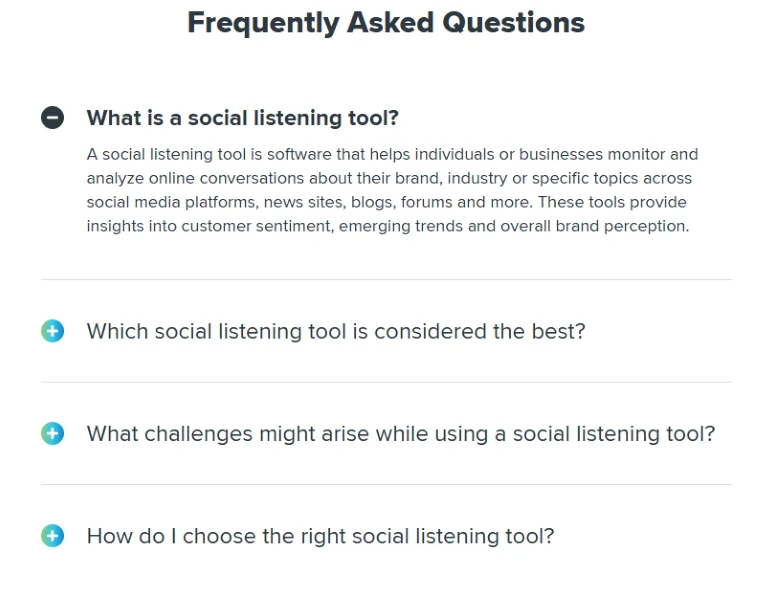
You don’t have to make your FAQ expandable. But do make sure and use subheaders like H3s to break it up into smaller sections.
13. Include real-life examples
Notice how throughout this post I’ve included examples of real SEO copywriting. That’s a great SEO copywriting tip I hope everyone uses more often.
Real-life examples do a few things for your SEO and overall value of your content:
- They add credibility to your content since what you say is happening in the wild.
- They give you something to “deconstruct” to help readers grasp the concepts you’re sharing.
- They offer a reason to add visuals, which breaks up your long-form content.
Real-life examples tip: Try adding the word “examples” to some of your most important keywords to see if those new keyphrases are worth targeting, too. So if you want to rank for “How to create a landing page,” look at “Best landing page examples” as an additional keyword to target.
14. Bake in local SEO
Even if someone doesn’t explicitly type the city they’re in, Google will still match searchers up to local businesses that are clearly near them. So it’s extra important for local SEO to add geo-targeted keywords throughout their site.
Have a quick look at this Brooklyn plumber’s website.
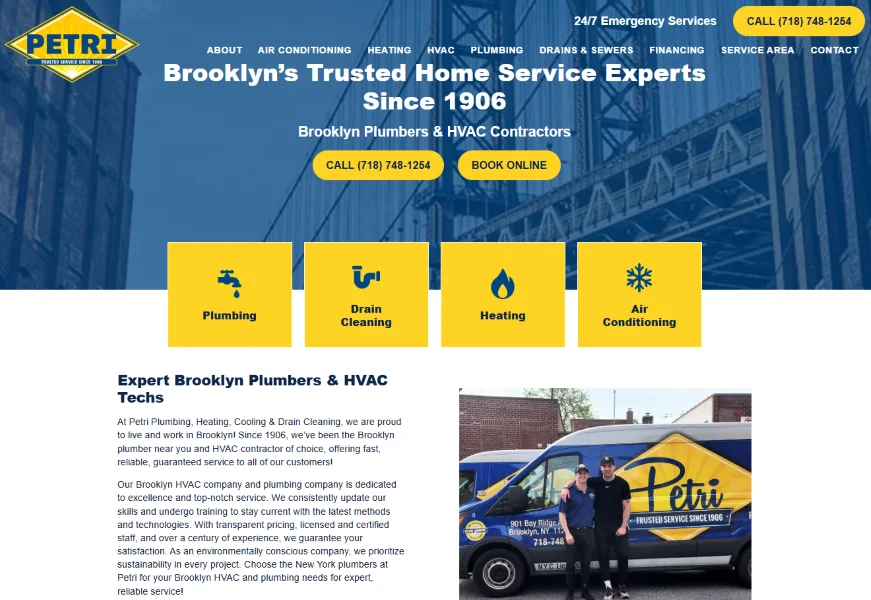
The word Brooklyn appears five times in this section, and more than a dozen times total as you scroll through the page.
15. Prove your trustworthiness
Ideally, Google only ranks trustworthy sites. That isn’t always the reality, but it’s a good assumption to work from. And it is often true for sensitive topics like finances, health, and safety, which Google calls Your Money or Your Life (YMYL) topics.
BetterHelp demonstrates its credibility by featuring a review from a mental healthcare professional.
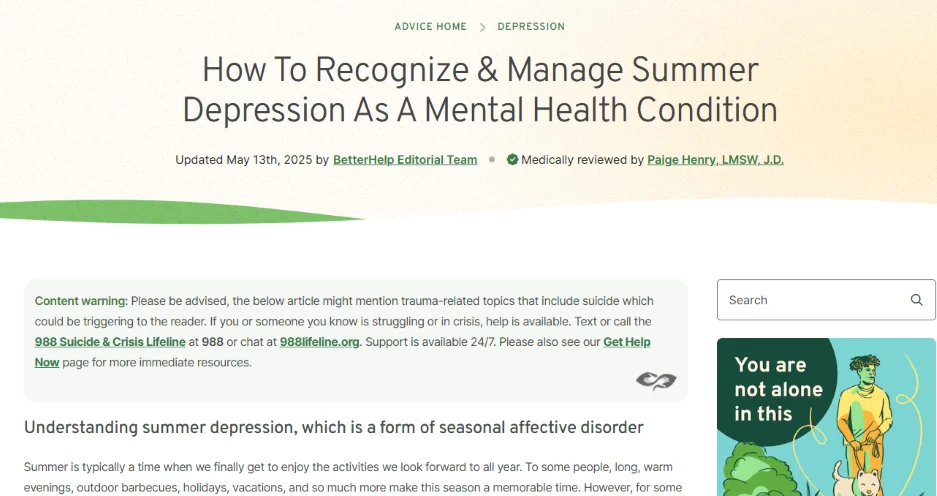
That should be a signal to Google that it’s a trustworthy post. And even better, readers can trust it more, too.
Even if you don’t publish content about YMYL topics, it’s still useful to share your authors’ expertise in their bios or in the posts themselves.
SEO copywriting stats and trends to guide your next project
SEO copywriting is evolving quickly (faster than I’ve seen it change in over a decade!). Here’s what the numbers tell us is happening.
Is SEO copywriting still important?
There are plenty of soothsayers claiming that SEO and SEO copywriting are dead. The data tells a different story:
- 53.3% of all website traffic comes from organic search: This underlines how pivotal SEO-written content still is to website visibility.
- SEO drives over 1,000% more traffic than organic social media: That shows how powerful search-focused copy is at attracting visitors.
- Leads from SEO have a 14.6% close rate: This is notably higher than many other lead sources, highlighting SEO copy’s influence on conversions.
What’s working in SEO copywriting now?
Here are a few places SEO copywriters should put their focus:
- Content over 3,000 words wins 3X more traffic: And 4X more shares, and 3.5X more backlinks than average-length content (~1,400 words), emphasizing the value of in-depth SEO content.
- Featured snippets boast the highest click‑through rate of around 42.9%: That tells us the impact of structuring copy to target “snippet” placements.
- 52% of sources cited in Google AI Overviews rank in the top 10 results: So, if we continue to work on traditional SEO copywriting strategies, we can also achieve visibility in AI-generated responses.
How is AI reshaping SEO copywriting?
AI is heavily impacting both the creation side and the demand side of SEO. Here are a few ways it’s happening:
- 80% of consumers now resolve 40% of searches without clicking any links (zero-click searches): Brands need to optimize content for AI platforms and consider targeting awareness from zero-click searches.
- 67% of small businesses use AI to improve their content and SEO: AI is leveling the playing field for small and local businesses so they can compete online with the big guys.
- 75% of content marketers plan to use AI to support content marketing efforts in 2025: That’s up from 64.7% in 2023—demonstrating a steep and growing reliance on AI in content creation strategy.
Prepare for the future of SEO copywriting
SEO copywriting will continue to be important for a long time. It just may be that writers target different types of keywords for many platforms beyond Google. And although many of the core principles remain intact, there are nuances to ranking on non-traditional search platforms we’ll all need to learn.
No matter what happens, though, keep leading with value for the reader. Hopefully, that will never go out of style.




